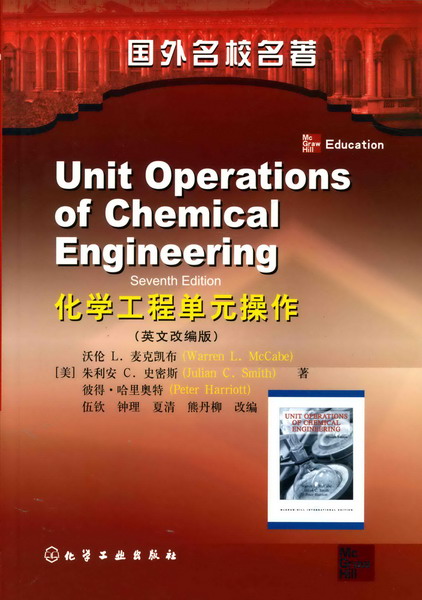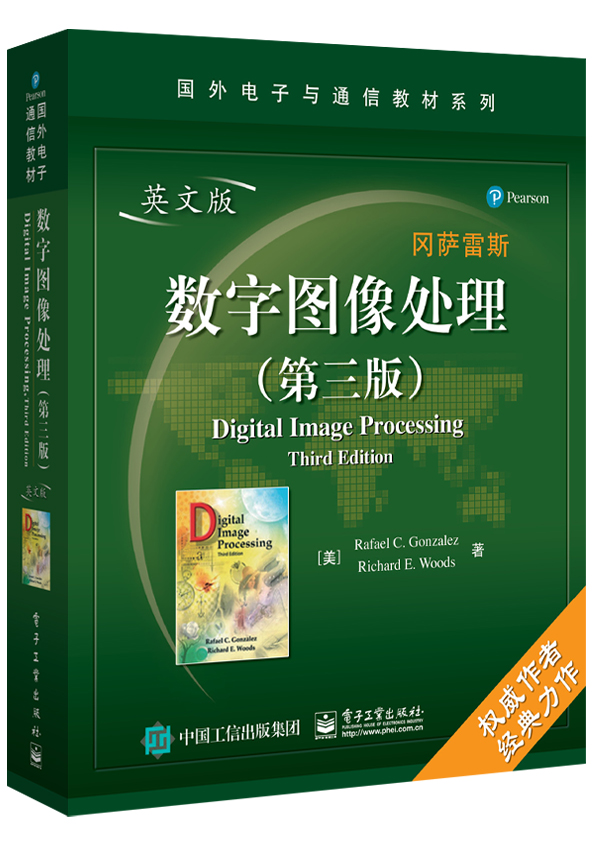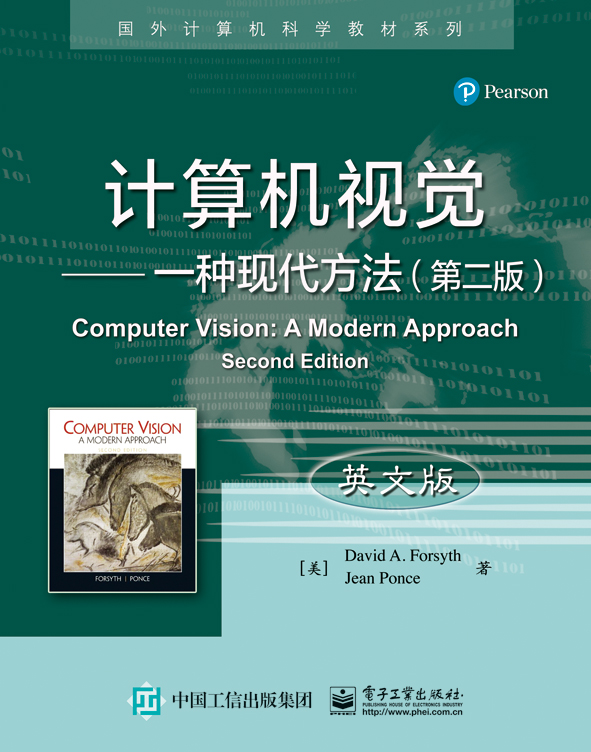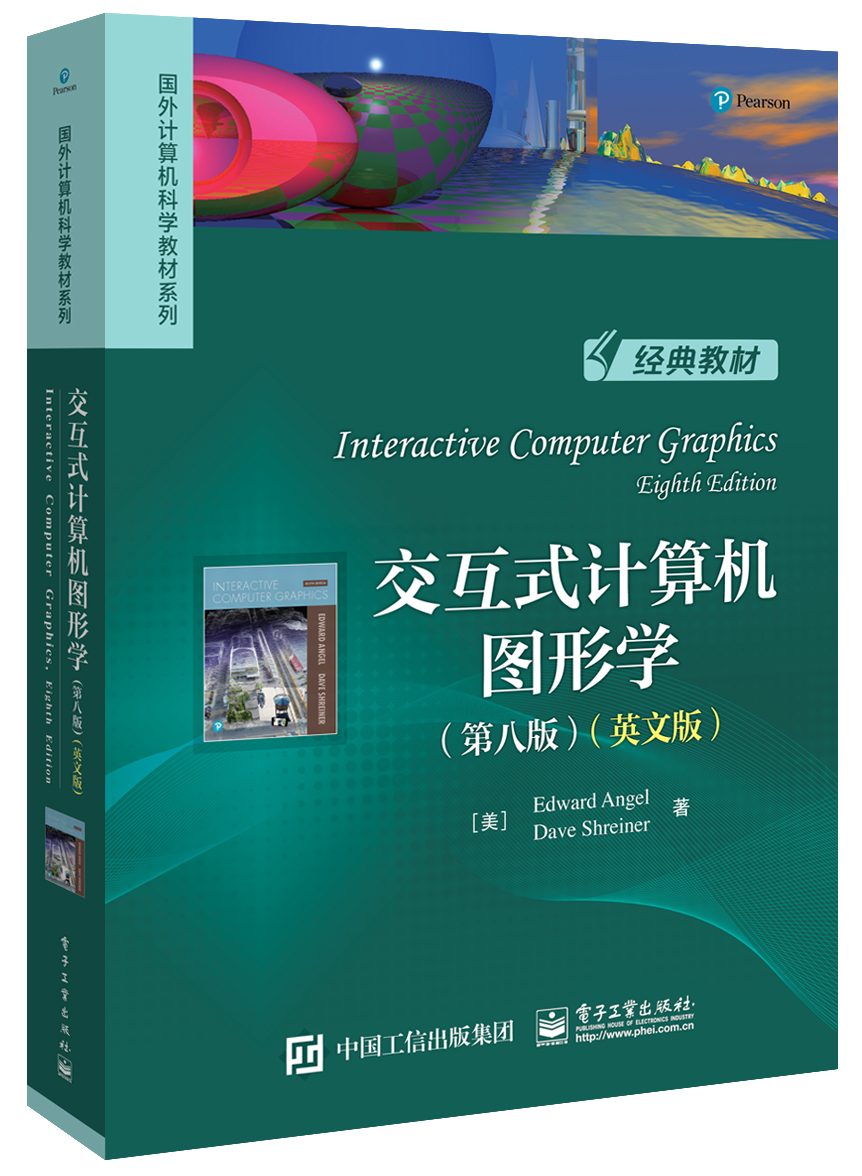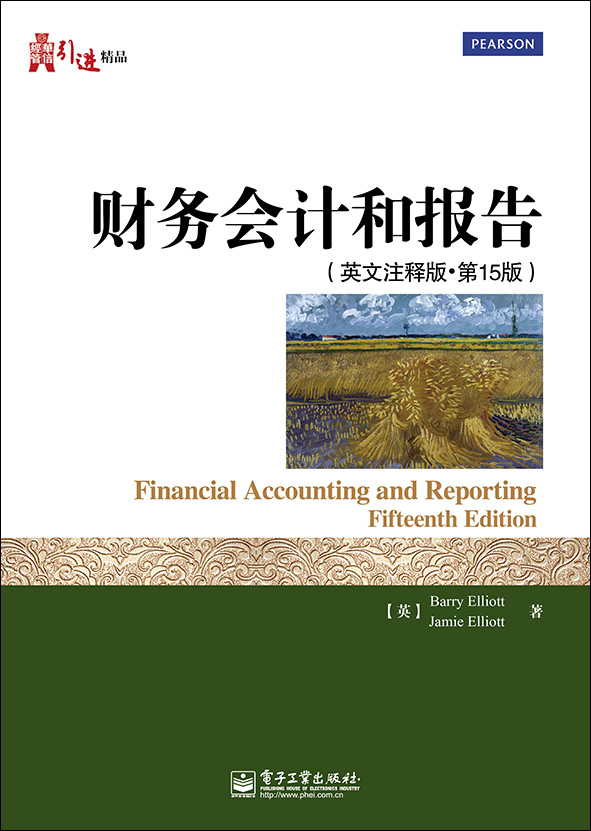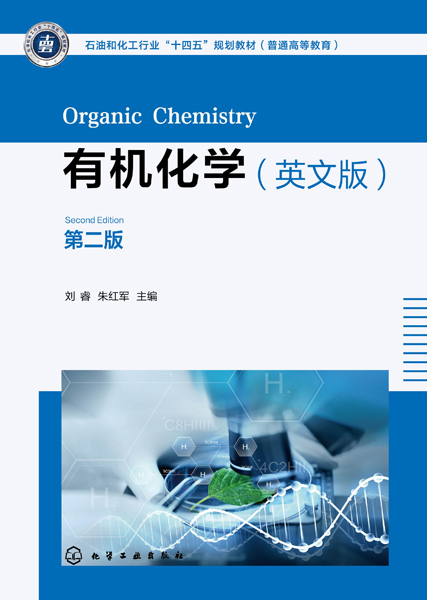- 电子工业出版社
- 9787121176036
- 1-1
- 350533
- 16开
- 2012-08
- 936
- 微电子科学与工程(工学/理学)
- 本科 研究生(硕士、EMBA、MBA、MPA、博士)
内容简介
本书可供英文原版教辅:习题解答,PPT,插图文件;教辅申请咨询Email:Te_service@。
本书侧重系统级描述,综合了无线通信电路系统描述、器件特性及单元电路分析,讨论最新架构、电路和器件。第1和第2章首先介绍射频电子学基本概念和术语;第3章和第4章讨论通信系统层的建模、检测、多路存取等技术及无线标准;第5章讨论无线前端收发器的结构和集成电路的实现,第6章到第9章详细讨论了低噪声放大器和混频器、振荡器、频率综合器和功放器电路原理和分析方法。
本书侧重系统级描述,综合了无线通信电路系统描述、器件特性及单元电路分析,讨论最新架构、电路和器件。第1和第2章首先介绍射频电子学基本概念和术语;第3章和第4章讨论通信系统层的建模、检测、多路存取等技术及无线标准;第5章讨论无线前端收发器的结构和集成电路的实现,第6章到第9章详细讨论了低噪声放大器和混频器、振荡器、频率综合器和功放器电路原理和分析方法。
目录
CONTENTS
CHAPTER 1 INTRODUCTION TO RF AND WIRELESS TECHNOLOGY 1
1.1 A Wireless World 1
1.2 RF Design Is Challenging 3
1.3 The Big Picture 4
References 5
CHAPTER 2 BASIC CONCEPTS IN RF DESIGN 7
2.1 General Considerations 7
2.1.1 Units in RF Design 7
2.1.2 Time Variance 9
2.1.3 Nonlinearity 12
2.2 Effects of Nonlinearity 14
2.2.1 Harmonic Distortion 14
2.2.2 Gain Compression 16
2.2.3 Cross Modulation 20
2.2.4 Intermodulation 21
2.2.5 Cascaded Nonlinear Stages 29
2.2.6 AM/PM Conversion 33
2.3 Noise 35
2.3.1 Noise as a Random Process 36
2.3.2 Noise Spectrum 37
2.3.3 Effect of Transfer Function on Noise 39
2.3.4 Device Noise 40
2.3.5 Representation of Noise in Circuits 46
2.4 Sensitivity and Dynamic Range 58
2.4.1 Sensitivity 59
2.4.2 Dynamic Range 60
2.5 Passive Impedance Transformation 62
2.5.1 Quality Factor 63
2.5.2 Series-to-Parallel Conversion 63
2.5.3 Basic Matching Networks 65
2.5.4 Loss in Matching Networks 69
2.6 Scattering Parameters 71
2.7 Analysis of Nonlinear Dynamic Systems 75
2.7.1 Basic Considerations 75
2.8 Volterra Series 77
2.8.1 Method of Nonlinear Currents 81
References 86
Problems 86
CHAPTER 3 COMMUNICATION CONCEPTS 91
3.1 General Considerations 91
3.2 Analog Modulation 93
3.2.1 Amplitude Modulation 93
3.2.2 Phase and Frequency Modulation 95
3.3 Digital Modulation 99
3.3.1 Intersymbol Interference 101
3.3.2 Signal Constellations 105
3.3.3 Quadrature Modulation 107
3.3.4 GMSK and GFSK Modulation 112
3.3.5 Quadrature Amplitude Modulation 114
3.3.6 Orthogonal Frequency Division Multiplexing 115
3.4 Spectral Regrowth 118
3.5 Mobile RF Communications 119
3.6 Multiple Access Techniques 123
3.6.1 Time and Frequency Division Duplexing 123
3.6.2 Frequency-Division Multiple Access 125
3.6.3 Time-Division Multiple Access 125
3.6.4 Code-Division Multiple Access 126
3.7 Wireless Standards 130
3.7.1 GSM 132
3.7.2 IS-95 CDMA 137
3.7.3 Wideband CDMA 139
3.7.4 Bluetooth 143
3.7.5 IEEE802.11a/b/g 147
3.8 Appendix I: Differential Phase Shift Keying 151
References 152
Problems 152
CHAPTER 4 TRANSCEIVER ARCHITECTURES 155
4.1 General Considerations 155
4.2 Receiver Architectures 160
4.2.1 Basic Heterodyne Receivers 160
4.2.2 Modern Heterodyne Receivers 171
4.2.3 Direct-Conversion Receivers 179
4.2.4 Image-Reject Receivers 200
4.2.5 Low-IF Receivers 214
4.3 Transmitter Architectures 226
4.3.1 General Considerations 226
4.3.2 Direct-Conversion Transmitters 227
4.3.3 Modern Direct-Conversion Transmitters 238
4.3.4 Heterodyne Transmitters 244
4.3.5 Other TX Architectures 248
4.4 OOK Transceivers 248
References 249
Problems 250
CHAPTER 5 LOW-NOISE AMPLIFIERS 255
5.1 General Considerations 255
5.2 Problem of Input Matching 263
5.3 LNA Topologies 266
5.3.1 Common-Source Stage with Inductive Load 266
5.3.2 Common-Source Stage with Resistive Feedback 269
5.3.3 Common-Gate Stage 272
5.3.4 Cascode CS Stage with Inductive Degeneration 284
5.3.5 Variants of Common-Gate LNA 296
5.3.6 Noise-Cancelling LNAs 300
5.3.7 Reactance-Cancelling LNAs 303
5.4 Gain Switching 305
5.5 Band Switching 312
5.6 High-IP2 LNAs 313
5.6.1 Differential LNAs 314
5.6.2 Other Methods of IP2 Improvement 323
5.7 Nonlinearity Calculations 325
5.7.1 Degenerated CS Stage 325
5.7.2 Undegenerated CS Stage 329
5.7.3 Differential and Quasi-Differential Pairs 331
5.7.4 Degenerated Differential Pair 332
References 333
Problems 333
CHAPTER 6 MIXERS 337
6.1 General Considerations 337
6.1.1 Performance Parameters 338
6.1.2 Mixer Noise Figures 343
6.1.3 Single-Balanced and Double-Balanced Mixers 348
6.2 Passive Downconversion Mixers 350
6.2.1 Gain 350
6.2.2 LO Self-Mixing 357
6.2.3 Noise 357
6.2.4 Input Impedance 364
6.2.5 Current-Driven Passive Mixers 366
6.3 Active Downconversion Mixers 368
6.3.1 Conversion Gain 370
6.3.2 Noise in Active Mixers 377
6.3.3 Linearity 387
6.4 Improved Mixer Topologies 393
6.4.1 Active Mixers with Current-Source Helpers 393
6.4.2 Active Mixers with Enhanced Transconductance 394
6.4.3 Active Mixers with High IP2 397
6.4.4 Active Mixers with Low Flicker Noise 405
6.5 Upconversion Mixers 408
6.5.1 Performance Requirements 408
6.5.2 Upconversion Mixer Topologies 409
References 424
Problems 425
CHAPTER 7 PASSIVE DEVICES 429
7.1 General Considerations 429
7.2 Inductors 431
7.2.1 Basic Structure 431
7.2.2 Inductor Geometries 435
7.2.3 Inductance Equations 436
7.2.4 Parasitic Capacitances 439
7.2.5 Loss Mechanisms 444
7.2.6 Inductor Modeling 455
7.2.7 Alternative Inductor Structures 460
7.3 Transformers 470
7.3.1 Transformer Structures 470
7.3.2 Effect of Coupling Capacitance 475
7.3.3 Transformer Modeling 475
7.4 Transmission Lines 476
7.4.1 T-Line Structures 478
7.5 Varactors 483
7.6 Constant Capacitors 490
7.6.1 MOS Capacitors 491
7.6.2 Metal-Plate Capacitors 493
References 495
Problems 496
CHAPTER 8 OSCILLATORS 497
8.1 Performance Parameters 497
8.2 Basic Principles 501
8.2.1 Feedback View of Oscillators 502
8.2.2 One-Port View of Oscillators 508
8.3 Cross-Coupled Oscillator 511
8.4 Three-Point Oscillators 517
8.5 Voltage-Controlled Oscillators 518
8.5.1 Tuning Range Limitations 521
8.5.2 Effect of Varactor Q 522
8.6 LC VCOs with Wide Tuning Range 524
8.6.1 VCOs with Continuous Tuning 524
8.6.2 Amplitude Variation with Frequency Tuning 532
8.6.3 Discrete Tuning 532
8.7 Phase Noise 536
8.7.1 Basic Concepts 536
8.7.2 Effect of Phase Noise 539
8.7.3 Analysis of Phase Noise: Approach I 544
8.7.4 Analysis of Phase Noise: Approach II 557
8.7.5 Noise of Bias Current Source 565
8.7.6 Figures of Merit of VCOs 570
8.8 Design Procedure 571
8.8.1 Low-Noise VCOs 573
8.9 LO Interface 575
8.10 Mathematical Model of VCOs 577
8.11 Quadrature Oscillators 581
8.11.1 Basic Concepts 581
8.11.2 Properties of Coupled Oscillators 584
8.11.3 Improved Quadrature Oscillators 589
8.12 Appendix I: Simulation of Quadrature Oscillators 592
References 593
Problems 594
CHAPTER 9 PHASE-LOCKED LOOPS 597
9.1 Basic Concepts 597
9.1.1 Phase Detector 597
9.2 Type-I PLLs 600
9.2.1 Alignment of a VCO’s Phase 600
9.2.2 Simple PLL 601
9.2.3 Analysis of Simple PLL 603
9.2.4 Loop Dynamics 606
9.2.5 Frequency Multiplication 609
9.2.6 Drawbacks of Simple PLL 611
9.3 Type-II PLLs 611
9.3.1 Phase/Frequency Detectors 612
9.3.2 Charge Pumps 614
9.3.3 Charge-Pump PLLs 615
9.3.4 Transient Response 620
9.3.5 Limitations of Continuous-Time Approximation 622
9.3.6 Frequency-Multiplying CPPLL 623
9.3.7 Higher-Order Loops 625
9.4 PFD/CP Nonidealities 627
9.4.1 Up and Down Skew and Width Mismatch 627
9.4.2 Voltage Compliance 630
9.4.3 Charge Injection and Clock Feedthrough 630
9.4.4 Random Mismatch between Up and Down Currents 632
9.4.5 Channel-Length Modulation 633
9.4.6 Circuit Techniques 634
9.5 Phase Noise in PLLs 638
9.5.1 VCO Phase Noise 638
9.5.2 Reference Phase Noise 643
9.6 Loop Bandwidth 645
9.7 Design Procedure 646
9.8 Appendix I: Phase Margin of Type-II PLLs 647
References 651
Problems 652
CHAPTER 10 INTEGER-N FREQUENCY SYNTHESIZERS 655
10.1 General Considerations 655
10.2 Basic Integer-N Synthesizer 659
10.3 Settling Behavior 661
10.4 Spur Reduction Techniques 664
10.5 PLL-Based Modulation 667
10.5.1 In-Loop Modulation 667
10.5.2 Modulation by Offset PLLs 670
10.6 Divider Design 673
10.6.1 Pulse Swallow Divider 674
10.6.2 Dual-Modulus Dividers 677
10.6.3 Choice of Prescaler Modulus 682
10.6.4 Divider Logic Styles 683
10.6.5 Miller Divider 699
10.6.6 Injection-Locked Dividers 707
10.6.7 Divider Delay and Phase Noise 709
References 712
Problems 713
CHAPTER 11 FRACTIONAL-N SYNTHESIZERS 715
11.1 Basic Concepts 715
11.2 Randomization and Noise Shaping 718
11.2.1 Modulus Randomization 718
11.2.2 Basic Noise Shaping 722
11.2.3 Higher-Order Noise Shaping 728
11.2.4 Problem of Out-of-Band Noise 732
11.2.5 Effect of Charge Pump Mismatch 733
11.3 Quantization Noise Reduction Techniques 738
11.3.1 DAC Feedforward 738
11.3.2 Fractional Divider 742
11.3.3 Reference Doubling 743
11.3.4 Multiphase Frequency Division 745
11.4 Appendix I: Spectrum of Quantization Noise 748
References 749
Problems 749
CHAPTER 12 POWER AMPLIFIERS 751
12.1 General Considerations 751
12.1.1 Effect of High Currents 754
12.1.2 Efficiency 755
12.1.3 Linearity 756
12.1.4 Single-Ended and Differential PAs 758
12.2 Classification of Power Amplifiers 760
12.2.1 Class A Power Amplifiers 760
12.2.2 Class B Power Amplifiers 764
12.2.3 Class C Power Amplifiers 768
12.3 High-Efficiency Power Amplifiers 770
12.3.1 Class A Stage with Harmonic Enhancement 771
12.3.2 Class E Stage 772
12.3.3 Class F Power Amplifiers 775
12.4 Cascode Output Stages 776
12.5 Large-Signal Impedance Matching 780
12.6 Basic Linearization Techniques 782
12.6.1 Feedforward 783
12.6.2 Cartesian Feedback 786
12.6.3 Predistortion 787
12.6.4 Envelope Feedback 788
12.7 Polar Modulation 790
12.7.1 Basic Idea 790
12.7.2 Polar Modulation Issues 793
12.7.3 Improved Polar Modulation 796
12.8 Outphasing 802
12.8.1 Basic Idea 802
12.8.2 Outphasing Issues 805
12.9 Doherty Power Amplifier 811
12.10 Design Examples 814
12.10.1 Cascode PA Examples 815
12.10.2 Positive-Feedback PAs 819
12.10.3 PAs with Power Combining 821
12.10.4 Polar Modulation PAs 824
12.10.5 Outphasing PA Example 826
References 830
Problems 831
CHAPTER 13 TRANSCEIVER DESIGN EXAMPLE 833
13.1 System-Level Considerations 833
13.1.1 Receiver 834
13.1.2 Transmitter 838
13.1.3 Frequency Synthesizer 840
13.1.4 Frequency Planning 844
13.2 Receiver Design 848
13.2.1 LNA Design 849
13.2.2 Mixer Design 851
13.2.3 AGC 856
13.3 TX Design 861
13.3.1 PA Design 861
13.3.2 Upconverter 867
13.4 Synthesizer Design 869
13.4.1 VCO Design 869
13.4.2 Divider Design 878
13.4.3 Loop Design 882
References 886
Problems 886
INDEX 889
CHAPTER 1 INTRODUCTION TO RF AND WIRELESS TECHNOLOGY 1
1.1 A Wireless World 1
1.2 RF Design Is Challenging 3
1.3 The Big Picture 4
References 5
CHAPTER 2 BASIC CONCEPTS IN RF DESIGN 7
2.1 General Considerations 7
2.1.1 Units in RF Design 7
2.1.2 Time Variance 9
2.1.3 Nonlinearity 12
2.2 Effects of Nonlinearity 14
2.2.1 Harmonic Distortion 14
2.2.2 Gain Compression 16
2.2.3 Cross Modulation 20
2.2.4 Intermodulation 21
2.2.5 Cascaded Nonlinear Stages 29
2.2.6 AM/PM Conversion 33
2.3 Noise 35
2.3.1 Noise as a Random Process 36
2.3.2 Noise Spectrum 37
2.3.3 Effect of Transfer Function on Noise 39
2.3.4 Device Noise 40
2.3.5 Representation of Noise in Circuits 46
2.4 Sensitivity and Dynamic Range 58
2.4.1 Sensitivity 59
2.4.2 Dynamic Range 60
2.5 Passive Impedance Transformation 62
2.5.1 Quality Factor 63
2.5.2 Series-to-Parallel Conversion 63
2.5.3 Basic Matching Networks 65
2.5.4 Loss in Matching Networks 69
2.6 Scattering Parameters 71
2.7 Analysis of Nonlinear Dynamic Systems 75
2.7.1 Basic Considerations 75
2.8 Volterra Series 77
2.8.1 Method of Nonlinear Currents 81
References 86
Problems 86
CHAPTER 3 COMMUNICATION CONCEPTS 91
3.1 General Considerations 91
3.2 Analog Modulation 93
3.2.1 Amplitude Modulation 93
3.2.2 Phase and Frequency Modulation 95
3.3 Digital Modulation 99
3.3.1 Intersymbol Interference 101
3.3.2 Signal Constellations 105
3.3.3 Quadrature Modulation 107
3.3.4 GMSK and GFSK Modulation 112
3.3.5 Quadrature Amplitude Modulation 114
3.3.6 Orthogonal Frequency Division Multiplexing 115
3.4 Spectral Regrowth 118
3.5 Mobile RF Communications 119
3.6 Multiple Access Techniques 123
3.6.1 Time and Frequency Division Duplexing 123
3.6.2 Frequency-Division Multiple Access 125
3.6.3 Time-Division Multiple Access 125
3.6.4 Code-Division Multiple Access 126
3.7 Wireless Standards 130
3.7.1 GSM 132
3.7.2 IS-95 CDMA 137
3.7.3 Wideband CDMA 139
3.7.4 Bluetooth 143
3.7.5 IEEE802.11a/b/g 147
3.8 Appendix I: Differential Phase Shift Keying 151
References 152
Problems 152
CHAPTER 4 TRANSCEIVER ARCHITECTURES 155
4.1 General Considerations 155
4.2 Receiver Architectures 160
4.2.1 Basic Heterodyne Receivers 160
4.2.2 Modern Heterodyne Receivers 171
4.2.3 Direct-Conversion Receivers 179
4.2.4 Image-Reject Receivers 200
4.2.5 Low-IF Receivers 214
4.3 Transmitter Architectures 226
4.3.1 General Considerations 226
4.3.2 Direct-Conversion Transmitters 227
4.3.3 Modern Direct-Conversion Transmitters 238
4.3.4 Heterodyne Transmitters 244
4.3.5 Other TX Architectures 248
4.4 OOK Transceivers 248
References 249
Problems 250
CHAPTER 5 LOW-NOISE AMPLIFIERS 255
5.1 General Considerations 255
5.2 Problem of Input Matching 263
5.3 LNA Topologies 266
5.3.1 Common-Source Stage with Inductive Load 266
5.3.2 Common-Source Stage with Resistive Feedback 269
5.3.3 Common-Gate Stage 272
5.3.4 Cascode CS Stage with Inductive Degeneration 284
5.3.5 Variants of Common-Gate LNA 296
5.3.6 Noise-Cancelling LNAs 300
5.3.7 Reactance-Cancelling LNAs 303
5.4 Gain Switching 305
5.5 Band Switching 312
5.6 High-IP2 LNAs 313
5.6.1 Differential LNAs 314
5.6.2 Other Methods of IP2 Improvement 323
5.7 Nonlinearity Calculations 325
5.7.1 Degenerated CS Stage 325
5.7.2 Undegenerated CS Stage 329
5.7.3 Differential and Quasi-Differential Pairs 331
5.7.4 Degenerated Differential Pair 332
References 333
Problems 333
CHAPTER 6 MIXERS 337
6.1 General Considerations 337
6.1.1 Performance Parameters 338
6.1.2 Mixer Noise Figures 343
6.1.3 Single-Balanced and Double-Balanced Mixers 348
6.2 Passive Downconversion Mixers 350
6.2.1 Gain 350
6.2.2 LO Self-Mixing 357
6.2.3 Noise 357
6.2.4 Input Impedance 364
6.2.5 Current-Driven Passive Mixers 366
6.3 Active Downconversion Mixers 368
6.3.1 Conversion Gain 370
6.3.2 Noise in Active Mixers 377
6.3.3 Linearity 387
6.4 Improved Mixer Topologies 393
6.4.1 Active Mixers with Current-Source Helpers 393
6.4.2 Active Mixers with Enhanced Transconductance 394
6.4.3 Active Mixers with High IP2 397
6.4.4 Active Mixers with Low Flicker Noise 405
6.5 Upconversion Mixers 408
6.5.1 Performance Requirements 408
6.5.2 Upconversion Mixer Topologies 409
References 424
Problems 425
CHAPTER 7 PASSIVE DEVICES 429
7.1 General Considerations 429
7.2 Inductors 431
7.2.1 Basic Structure 431
7.2.2 Inductor Geometries 435
7.2.3 Inductance Equations 436
7.2.4 Parasitic Capacitances 439
7.2.5 Loss Mechanisms 444
7.2.6 Inductor Modeling 455
7.2.7 Alternative Inductor Structures 460
7.3 Transformers 470
7.3.1 Transformer Structures 470
7.3.2 Effect of Coupling Capacitance 475
7.3.3 Transformer Modeling 475
7.4 Transmission Lines 476
7.4.1 T-Line Structures 478
7.5 Varactors 483
7.6 Constant Capacitors 490
7.6.1 MOS Capacitors 491
7.6.2 Metal-Plate Capacitors 493
References 495
Problems 496
CHAPTER 8 OSCILLATORS 497
8.1 Performance Parameters 497
8.2 Basic Principles 501
8.2.1 Feedback View of Oscillators 502
8.2.2 One-Port View of Oscillators 508
8.3 Cross-Coupled Oscillator 511
8.4 Three-Point Oscillators 517
8.5 Voltage-Controlled Oscillators 518
8.5.1 Tuning Range Limitations 521
8.5.2 Effect of Varactor Q 522
8.6 LC VCOs with Wide Tuning Range 524
8.6.1 VCOs with Continuous Tuning 524
8.6.2 Amplitude Variation with Frequency Tuning 532
8.6.3 Discrete Tuning 532
8.7 Phase Noise 536
8.7.1 Basic Concepts 536
8.7.2 Effect of Phase Noise 539
8.7.3 Analysis of Phase Noise: Approach I 544
8.7.4 Analysis of Phase Noise: Approach II 557
8.7.5 Noise of Bias Current Source 565
8.7.6 Figures of Merit of VCOs 570
8.8 Design Procedure 571
8.8.1 Low-Noise VCOs 573
8.9 LO Interface 575
8.10 Mathematical Model of VCOs 577
8.11 Quadrature Oscillators 581
8.11.1 Basic Concepts 581
8.11.2 Properties of Coupled Oscillators 584
8.11.3 Improved Quadrature Oscillators 589
8.12 Appendix I: Simulation of Quadrature Oscillators 592
References 593
Problems 594
CHAPTER 9 PHASE-LOCKED LOOPS 597
9.1 Basic Concepts 597
9.1.1 Phase Detector 597
9.2 Type-I PLLs 600
9.2.1 Alignment of a VCO’s Phase 600
9.2.2 Simple PLL 601
9.2.3 Analysis of Simple PLL 603
9.2.4 Loop Dynamics 606
9.2.5 Frequency Multiplication 609
9.2.6 Drawbacks of Simple PLL 611
9.3 Type-II PLLs 611
9.3.1 Phase/Frequency Detectors 612
9.3.2 Charge Pumps 614
9.3.3 Charge-Pump PLLs 615
9.3.4 Transient Response 620
9.3.5 Limitations of Continuous-Time Approximation 622
9.3.6 Frequency-Multiplying CPPLL 623
9.3.7 Higher-Order Loops 625
9.4 PFD/CP Nonidealities 627
9.4.1 Up and Down Skew and Width Mismatch 627
9.4.2 Voltage Compliance 630
9.4.3 Charge Injection and Clock Feedthrough 630
9.4.4 Random Mismatch between Up and Down Currents 632
9.4.5 Channel-Length Modulation 633
9.4.6 Circuit Techniques 634
9.5 Phase Noise in PLLs 638
9.5.1 VCO Phase Noise 638
9.5.2 Reference Phase Noise 643
9.6 Loop Bandwidth 645
9.7 Design Procedure 646
9.8 Appendix I: Phase Margin of Type-II PLLs 647
References 651
Problems 652
CHAPTER 10 INTEGER-N FREQUENCY SYNTHESIZERS 655
10.1 General Considerations 655
10.2 Basic Integer-N Synthesizer 659
10.3 Settling Behavior 661
10.4 Spur Reduction Techniques 664
10.5 PLL-Based Modulation 667
10.5.1 In-Loop Modulation 667
10.5.2 Modulation by Offset PLLs 670
10.6 Divider Design 673
10.6.1 Pulse Swallow Divider 674
10.6.2 Dual-Modulus Dividers 677
10.6.3 Choice of Prescaler Modulus 682
10.6.4 Divider Logic Styles 683
10.6.5 Miller Divider 699
10.6.6 Injection-Locked Dividers 707
10.6.7 Divider Delay and Phase Noise 709
References 712
Problems 713
CHAPTER 11 FRACTIONAL-N SYNTHESIZERS 715
11.1 Basic Concepts 715
11.2 Randomization and Noise Shaping 718
11.2.1 Modulus Randomization 718
11.2.2 Basic Noise Shaping 722
11.2.3 Higher-Order Noise Shaping 728
11.2.4 Problem of Out-of-Band Noise 732
11.2.5 Effect of Charge Pump Mismatch 733
11.3 Quantization Noise Reduction Techniques 738
11.3.1 DAC Feedforward 738
11.3.2 Fractional Divider 742
11.3.3 Reference Doubling 743
11.3.4 Multiphase Frequency Division 745
11.4 Appendix I: Spectrum of Quantization Noise 748
References 749
Problems 749
CHAPTER 12 POWER AMPLIFIERS 751
12.1 General Considerations 751
12.1.1 Effect of High Currents 754
12.1.2 Efficiency 755
12.1.3 Linearity 756
12.1.4 Single-Ended and Differential PAs 758
12.2 Classification of Power Amplifiers 760
12.2.1 Class A Power Amplifiers 760
12.2.2 Class B Power Amplifiers 764
12.2.3 Class C Power Amplifiers 768
12.3 High-Efficiency Power Amplifiers 770
12.3.1 Class A Stage with Harmonic Enhancement 771
12.3.2 Class E Stage 772
12.3.3 Class F Power Amplifiers 775
12.4 Cascode Output Stages 776
12.5 Large-Signal Impedance Matching 780
12.6 Basic Linearization Techniques 782
12.6.1 Feedforward 783
12.6.2 Cartesian Feedback 786
12.6.3 Predistortion 787
12.6.4 Envelope Feedback 788
12.7 Polar Modulation 790
12.7.1 Basic Idea 790
12.7.2 Polar Modulation Issues 793
12.7.3 Improved Polar Modulation 796
12.8 Outphasing 802
12.8.1 Basic Idea 802
12.8.2 Outphasing Issues 805
12.9 Doherty Power Amplifier 811
12.10 Design Examples 814
12.10.1 Cascode PA Examples 815
12.10.2 Positive-Feedback PAs 819
12.10.3 PAs with Power Combining 821
12.10.4 Polar Modulation PAs 824
12.10.5 Outphasing PA Example 826
References 830
Problems 831
CHAPTER 13 TRANSCEIVER DESIGN EXAMPLE 833
13.1 System-Level Considerations 833
13.1.1 Receiver 834
13.1.2 Transmitter 838
13.1.3 Frequency Synthesizer 840
13.1.4 Frequency Planning 844
13.2 Receiver Design 848
13.2.1 LNA Design 849
13.2.2 Mixer Design 851
13.2.3 AGC 856
13.3 TX Design 861
13.3.1 PA Design 861
13.3.2 Upconverter 867
13.4 Synthesizer Design 869
13.4.1 VCO Design 869
13.4.2 Divider Design 878
13.4.3 Loop Design 882
References 886
Problems 886
INDEX 889



